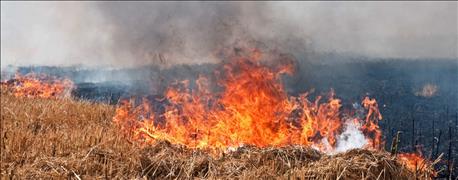October 8, 2015

Disputes with federal authorities can often create trouble for a farm or ranch, just ask the Hammond family. The family has been battling the Bureau of Land Management and others in the federal government over two fires and related issues for years. The government has charged them under the Antiterrorism and Effective Death Penalty Act for their activities.
The family maintains that the fires were started as prescribed burns either to control invasive species or to protect private land from lightning-caused fires. There's some history and background on this from some reports, detailing how a burn in 2001 and another in 2006 eventually burned about 140 acres of public land.
The charges were brought by BLM in 2012, several years after either fire. The family never denied starting the fires, which they claim were targeted at preserving grazing value of the land, and the federal land burns were unintentional. However, the act under which they were charged requires a minimum five-year sentence in jail. A district judge balked at the mandatory five-year sentence, and sentenced Dwight Hammond to three months in prison - he was only linked to the 2001 fire, and his son Steven Hammond to one year in prison - he was linked to both the 2001 and 2006 events. And they both got three years of supervised release, according to media reports.
However, federal prosecutors disagreed with the sentences noting that district judges basically can't disregard mandatory sentence guidelines. The result is that minus time served, the two Hammonds are being sent back to jail to serve their original five-year sentence.
The dispute has also cost the Hammond family because they've lost their BLM grazing permits for the past two years, hindering their ability to ranch profitably.
A different perspective
While the sentence may appear tough, a look at some of the testimony concerning the 2001 fire based on documents released by the U.S. Attorney's office in Oregon, shows that the Hammond's may not have been burning to simply protect pastureland. According to those documents, during the trial one witness testified that Steven Hammond started what became known as the Hardie-Hammond fire in 2001 "shortly after Steven Hammond and his hunting party illegally slaughtered several deer on BLM property."
That same witness says that Hammond gave instructions that "strike anywhere" matches be lit and dropped on the ground "because they were going to 'light up the whole county on fire.'" In those documents, the U.S. Attorney calls the Hammond action arson, not a controlled burn.
For the 2006 fire, which became known as the Krumbo Butte Fire, an August lightning storm started numerous fires and a burn ban was in effect while BLM firefighters were at work. "Despite the ban, and without permission or notification to BLM, Steven Hammond started several 'back fires' in an attempt to save the ranch's winter feed." Those fires burned onto public land, and BLM firefighters took steps to control the burn.
The "arson" as described by the U.S. Attorney carries a five-year mandatory sentence. The Hammonds have been fighting this continued prosecution even reaching out to the Supreme Court, which refused to hear the case.
About the Author(s)
You May Also Like






